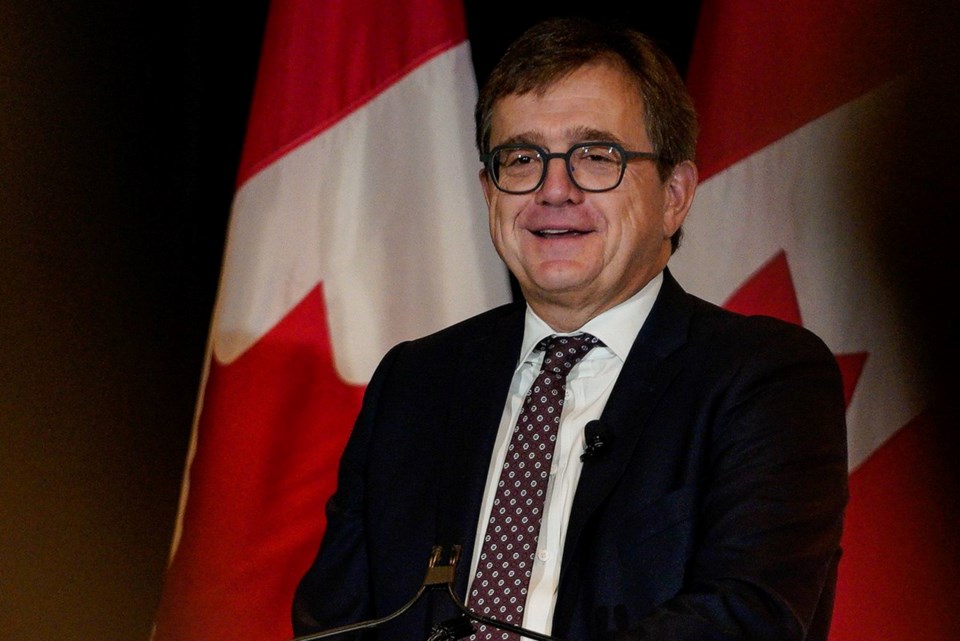With a global critical minerals supply gap coming, federal Natural Resources Minister Jonathan Wilkinson admits Ottawa has some work to do toward expediting approvals to put more critical minerals mining projects into production sooner.
In his Oct. 25 remarks to Canadian Club of Toronto, Wilkinson said Ottawa is looking to get on the same page with the provinces and territories in working smarter in advancing energy and natural resource projects along in a timely manner.
Wilkinson said there’s a clear need to find ways to develop projects “more rapidly than what we have been able to in the past.”
The bulk of his speech had much to do with Canada’s clean energy transition and fulfilling this country’s obligation to help its European allies struggling with an energy crisis following the cutoff of Russian oil and gas stemming from conflict in Ukraine.
But during the question-and-answer period, Wilkinson said on the domestic front, Ottawa faces interjurisdictional challenges. Each province has its own regulatory and permitting process for natural resource projects. Often there are situations where these federal and provincial processes work consecutively, rather than concurrently.
Sign up for the Sudbury Mining Solutions weekly newsletter here.
He cited the mining industry as a particular sector where Ottawa and the provinces must find ways to work more collaboratively and efficiently.
“In Canada, it typically takes us at least about 12 years to go from beginning to mine opening. On the international stage, it’s actually worse — it’s 15 to 18 years.
“If it really takes us 12 years …. we will not have sufficient quantities of the minerals that we need to actually build the cars that are required to actually get rid of the emissions in the transportation sector.
“So we have to figure out how to do things better and go faster.”
Other countries face similar challenges as Canada, he said.
Wilkinson said U.S. Energy Secretary Jennifer Granholm often mentions that the White House looks to Canada’s environmental assessment processes as a model “because we can get mines permitted and they cannot.”
Energy and critical minerals projects need to be fast-tracked, he said, but also move at a pace that doesn’t compromise the government’s climate change principles and abides by the federal Impact Assessment Act passed in 2019.
“How can we actually find ways to not cut corners from environmental perspective, not cut corners in terms of discharging our obligations to Indigenous peoples, but do things far more efficiently to get to an end state that actually allows us to make decisions on projects.”
Want to read more stories about business in the North? Subscribe to our newsletter.
This issue involves a greater interdepartmental discussion in Ottawa as to how to optimize their processes, he said.
Accelerating project development and figuring out how to streamline regulatory processes was outlined in the federal critical minerals strategy released last March and mentioned by Wilkinson at the Prospectors and Developers Association of Canada mining convention last June.
One way Ottawa hopes to align their regulatory and permitting regimes with the provinces and territories is through Regional Energy and Resource Tables.
Ontario joined this initiative yesterday along with British Columbia, Newfoundland-Labrador, Manitoba, Yukon, Northwest Territories, Prince Edward Island, Nova Scotia and New Brunswick.
Through this partnership, Wilkinson said, each provincial or territory will identify three to five areas of economic growth opportunities to transform regional industries and advance emerging ones. These collaborations are very much tied to Ottawa’s clean energy transition movement.
The Biden Administration has jumped on the green energy bandwagon in a big way with the passage of the Inflation Reduction Act this year. It provides a slew of subsidiaries and tax incentives designed to boost U.S. and North American production of critical minerals and establish a safe and secure domestic supply chain for technology and electric vehicle manufacturers.
Wilkinson said Canada welcomes this new legislation and hinted Ottawa will respond in a similar fashion to ensure this country remains a competitive jurisdiction to attract investment. The act has created an “unlevel playing field” that Canada must somehow level out, especially when it comes to placing mineral processing and battery manufacturing plants.
He’s urging his U.S. counterparts that this cannot become a game of legislative one-upmanship. “At the end of day, we need to be working on this together.”
But Wilkinson also reminded the audience that Canada has considerable leverage in its dialogue with the U.S.
“The Americans need our critical minerals.”
Talk also turned toward Indigenous equity in resource projects. It's a movement that’s started in the Western Canadian provinces as a means to achieve economic reconciliation, a phrase, Wilkinson said, not often mentioned in the broader national conversation.
Ontario’s electricity sector and the oil and gas industries are Canadian leaders in striking successful 50/50 partnership with Indigenous communities on new projects. The same kind of leadership needs to occur on the critical minerals front and in other resource sectors, he said.
Wilkinson said when mining companies enter a First Nation’s traditional territory, propose a big mine and promise a community only a handful of jobs and a new community centre, “it’s no wonder many folks would say, why would we agree to that?”
There must be pathways for Indigenous communities to have a seat at the table to derive a project’s long-term benefit and have a voice on how the project gets built.
“It changes the nature of the conversation.”
Ottawa is looking at financial tools to enable First Nation communities to participate in these projects. It could take the form of loan or loan guarantees.
“Part of it is about reconciliation, part of it is ensuring good projects can go ahead in a manner that is actually consistent with Indigenous perspectives. I think it’s a critically important issue.”




